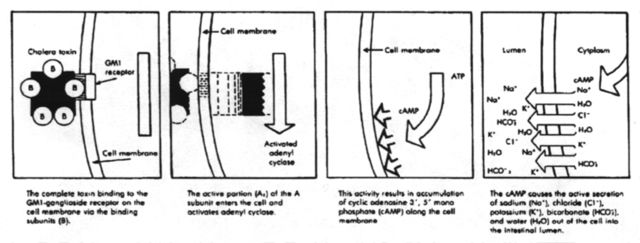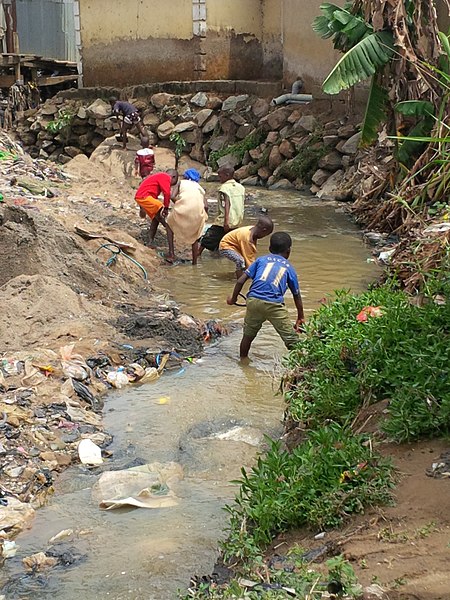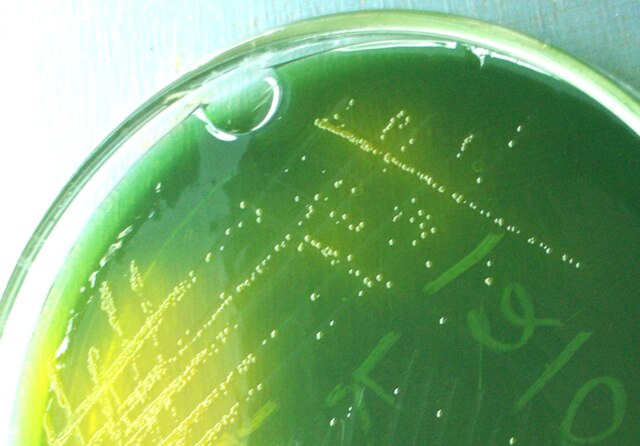Vibrio cholerae is a species of Gram-negative, facultative anaerobe and comma-shaped bacteria. The bacteria naturally live in brackish or saltwater where they attach themselves easily to the chitin-containing shells of crabs, shrimp, and other shellfish. Some strains of V. cholerae are pathogenic to humans and cause a deadly disease called cholera, which can be derived from the consumption of undercooked or raw marine life species or drinking contaminated water.
Vibrio cholerae
Cholera toxin interrupting regulation of adenyl cyclase inside the cell causing efflux of water and sodium into the intestinal lumen.
Children in Mpape community play in a waste water drainage area. This drainage was the suspected source of contamination of the well water that led to the cholera outbreak investigated by Nigeria FELTP residents in April 2014. Two samples collected from home wells around this drainage tested positive for Vibrio cholerae.
Yellow colored (sucrose-fermenting) colonies of Vibrio cholerae on TCBS agar.
Gram-negative bacteria are bacteria that unlike gram-positive bacteria do not retain the crystal violet stain used in the Gram staining method of bacterial differentiation. Their defining characteristic is their cell envelope, which consists of a thin peptidoglycan cell wall sandwiched between an inner (cytoplasmic) membrane and an outer membrane. These bacteria are found in all environments that support life on Earth.
Microscopic image of gram-negative Pseudomonas aeruginosa bacteria (pink-red rods)





